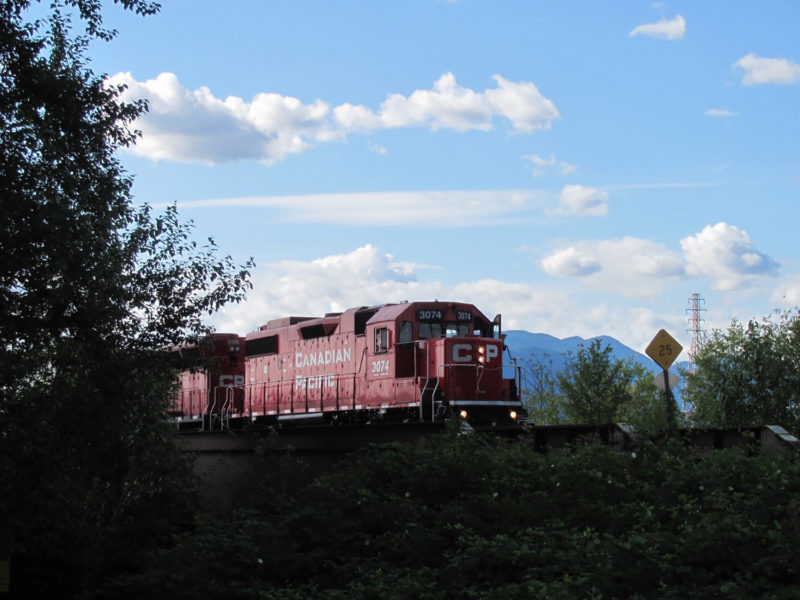PITT MEADOWS – Pitt Meadows could lose more than 100 acres of protected farmland if CP Rail wins approval to expand its operations in the community.
Plans for the CP Logistics Park [cplogisticspark.ca] were unveiled in December following consultations with the municipality, Katzie First Nation and Vancouver Fraser Port Authority last summer. An initial public consultation on the project wrapped up January 15.
“CP is proposing to construct a multi-modal, multi-commodity transload and logistics facility adjacent to its Vancouver Intermodal Facility in Pitt Meadows, to meet increased rail demand in Canada’s largest trade gateway,” the rail company says.
Project documents outline plans for 13 silos accommodating 15,600 tonnes of peas, lentils and beans (the equivalent of 147 train cars, or one unit train), an auto transload facility, and 11 tanks for holding ethanol and transportation fuels from Alberta and the US Midwest for distribution locally and overseas.
The project will occupy 101 acres south of Lougheed Highway. CP acquired the properties making up the site between 2012 and 2017. The land falls within the Agricultural Land Reserve. However, railway development falls within the jurisdiction of the federal government. CP does not need to file an application with the Agricultural Land Commission to develop a rail line on the property.
This concerns Shannon Roberts of Blooming Meadows, who operates a small-lot mixed farm with her sister near the proposed facility. She also worries about site safety, light pollution and the effect of particulate matter from site activities on her laying hens and field-grown cut flowers.
“A dirty flower is not a sellable flower,” she says, noting that hundreds of trucks will be needed to bring fill to the site, which sits on the floodplain adjacent to the Pitt River.
Preload will affect the water table in the area, which already suffers from drainage issues.
“I honestly don’t feel like I’m going to be able to farm my land,” she said. “I feel like it will be flooded.”
Drainage concerns
Similar concerns were raised when CP bought 58 acres of the site in 2012. Pitt Meadows, which is set to receive at least $4 million in property taxes each year from the proposed development, said at the time it was confident CP would work to mitigate drainage problems.
During an open house in January attended by close to 100 people, CP environmental assessment manager Joe Van Humbeck said the railway is studying the project’s impact on surface water and groundwater, and drafting storm water management plans.
“This data will feed into our engineering team to ensure that our facility includes the measures required to protect the Katzie Slough, the groundwater as well as the other attributes of the environment,” he says.
CP assistant vice-president, market strategy and demand management Jeff Edwards says mitigation plans for adjacent farmland are also under development.
“We recognize the importance of this valuable land and the fact that there is a great deal of support behind the agricultural land across the Lower Mainland,” he says.
However, he adds that the site is ideal for the project, since it’s adjacent to CP’s existing facilities in Pitt Meadows. While the loss will be felt locally, the project will benefit the agriculture sector nationally.
“We are opening markets and supporting the greater Canadian agricultural community through this development,” Edwards says. “I realize that’s not as specific to the local agricultural community … but we look forward to further conversations with local agricultural organizations, and I hope we get to have more of those conversations in the near future to better understand the impacts and the mitigation that we can work with them on.”
Speaking as director of operations for Pitt Meadows in 2012, Kim Grout – now CEO of the Agricultural Land Commission – said CP has a long-term vision for its properties. The commission is among the parties that intend to provide feedback on CP’s plans for the farmland.
A summary report from the first consultation will be available in March, with mitigation plans unveiled this summer. Construction of the project could begin as early as 2026 if federal authorities approve.


 Egg producer questions support for local eggs
Egg producer questions support for local eggs